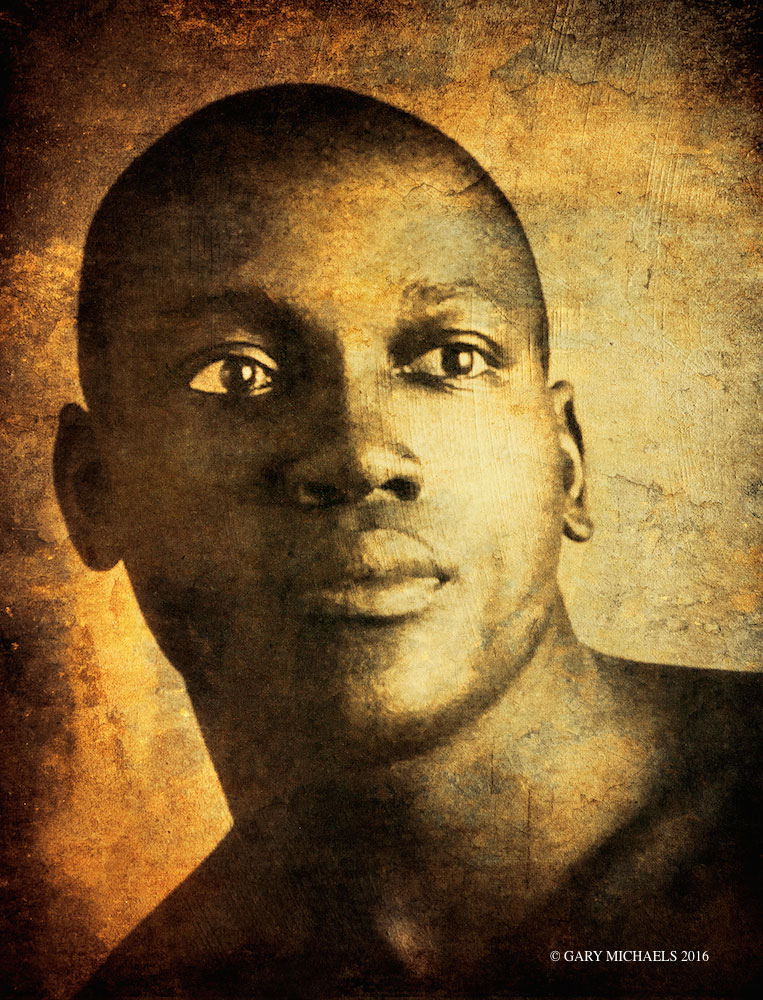
Jack Johnson. 1 of 5 Portraits in a Portfolio of 5 Portraits @ $1,200. 8 3/4” x 11 3/4”. Archival Pigment Print on Hahnemuhle Etching Paper. Edition size of 20 + 3 A/P
Jack Johnson
The Brunette In A Blond Town
Listen to Jack Johnson’s story
Jack Johnson famously called himself “The brunette in a blond town”
To the rest of the world he was the Galveston Giant, the man who became the first black heavyweight champion of the world and also the first black man allowed to fight for that tittle. While it’s supposed to be that a boxers greatest challenge is in the ring that couldn’t have been further from the truth in Johnson’s life. Due to blinding racial fears and prejudice he was denied his chance for years on end. Notably the fearsome undefeated Champion Jim Jeffries, retired from the ring in order to avoid the dangerous Johnson. The title, now vacant, was up for grabs in a match between Jack Root and Marvin Hart. Hart won the belt and held it briefly before losing it to Tommy Burns in a 20 round decision.
Johnson deserved a shot at the title, but Burns refused and went on a world wide tour in order to avoid him. Determined not to be denied his title shot Johnson chased Burns from California to London to Paris demanding a fight.
Burns hoping to avoid Johnson made an outrageous demand of $30,000, the
greatest amount to be earned by a boxer to that point in time. Undeterred
Johnson said “take the fight” agreeing to receive just $5,000 as his purse, and all of a sudden Australian promotor Hugh D. ( Huge Deal ) McIntosh had himself a Heavyweight Championship fight. The fight took place outside of Sydney,
Australia on December 26, 1908 and was a mismatch as Johnson taunted and
played with Burns for 14 rounds giving him the beating of his life and taking the belt. Johnson now had his Championship and sweet revenge. His win however was bittersweet. Instead of the victory ending the anger and acrimony towards him it only set ablaze more hatred and inflamed the white boxing world into searching for A Great White Hope. Finally former champion Jim Jeffries was persuaded to come out of retirement to beat Johnson and restore the natural order of white supremacy.
Outside the ring Johnson was a fast liver and a lover of the sporting life. He insisted on living his life however he chose with whomever he chose to live it with. He didn’t allow anyone or any social conventions from keeping him from enjoying his pleasures. He loved racing fast cars, gambling, playing the Viola, reading Shakespeare and the company of white women. As you can imagine what got Jack into the most trouble wasn’t Shakespeare or the Viola but his affinity for white women. This infuriated much of middle class black America who, according to The New York Age, a newspaper serving the black community, called for him to be more modest. Modesty, however, wasn’t enough for much of white America who wanted to see Jack punished. In this they were successful as he was charged, prosecuted and convicting of violating the Mann Act for traveling across state lines with his white girlfriend. The trial lasted less than 2 hours and Johnson was found guilty and sentenced to a year and a day in prison.
Released on $800 bond Jack was shadowed night and day by the police making
sure he didn’t jump bail. However. ever clever Jack wasn’t ready for prison and devised a plan to flee the country.
He convinced his good friend Ruke Foster, pitcher and manager of the traveling black baseball team Fosters Giants to lend him a uniform, give him some bags to carry and let him board a train with the team heading out on a North East barnstorming tour. With his cap pulled down low on his head Johnson boarded the train unnoticed by the police. Part one of his escape was successful. Jack eventually made his way to Europe where he boxed in exhibitions, performed in vaudeville shows and fought bulls in Spain.
After seeing the Pulitzer Prize winning play The Great White Hope, Muhammad Ali said “Thats my story. You take out the issue of white women and replace it with the issue of religion. That’s my story.”. Eventually growing tired of being on the run in Europe and missing his family Jack took his first step towards returning home by agreeing to fight Jess Willard in Cuba. Jack lost the fight in a lackluster performance, which he later said he threw, and returned to the U.S. in 1920, turning himself in and serving his sentence.
Johnson who started his career fighting in Battle Royale’s for coins thrown into the ring rose to be the Heavyweight Champion of the World, earning $117,000 in his 1910 fight with Jim Jeffries. He held the title from 1908 through 1915, at the time the longest reign in Heavyweight Championship history and he is considered to be one of the greatest if not the greatest defensive boxers of all time.
Reflecting on his life Jack was quoted as saying “Don’t let your dreams be dreams.” and “I have found no better way of avoiding race prejudice than to act with people of other races as if prejudice didn’t exist.”
Jack Johnson, The Galveston Giant, the man with the Golden Smile died in a car accident in Raleigh, N.C. 6/10/1946 at 68 years of age.
Rest in peace Jack.
Outside the ring Johnson was a fast liver and a lover of the sporting life. He insisted on living his life however he chose with whomever he chose to live it with. He didn’t allow anyone or any social conventions from keeping him from enjoying his pleasures. He loved racing fast cars, gambling, playing the Viola, reading Shakespeare and the company of white women. As you can imagine what got Jack into the most trouble wasn’t Shakespeare or the Viola but his affinity for white women. This infuriated much of middle class black America who, according to The New York Age, a newspaper serving the black community, called for him to be more modest. Modesty, however, wasn’t enough for much of white America who wanted to see Jack punished. In this they were successful as he was charged, prosecuted and convicting of violating the Mann Act for traveling across state lines with his white girlfriend. The trial lasted less than 2 hours and Johnson was found guilty and sentenced to a year and a day in prison.
Click on the video to watch the 1909 fight of Stanley Ketchel vs Jack Johnson
Released on $800 bond Jack was shadowed night and day by the police making
sure he didn’t jump bail. However. ever clever Jack wasn’t ready for prison and devised a plan to flee the country.
He convinced his good friend Ruke Foster, pitcher and manager of the traveling black baseball team Fosters Giants to lend him a uniform, give him some bags to carry and let him board a train with the team heading out on a North East barnstorming tour. With his cap pulled down low on his head Johnson boarded the train unnoticed by the police. Part one of his escape was successful. Jack eventually made his way to Europe where he boxed in exhibitions, performed in vaudeville shows and fought bulls in Spain.
After seeing the Pulitzer Prize winning play The Great White Hope, Muhammad Ali said “Thats my story. You take out the issue of white women and replace it with the issue of religion. That’s my story.”. Eventually growing tired of being on the run in Europe and missing his family Jack took his first step towards returning home by agreeing to fight Jess Willard in Cuba. Jack lost the fight in a lackluster performance, which he later said he threw, and returned to the U.S. in 1920, turning himself in and serving his sentence.
Johnson who started his career fighting in Battle Royale’s for coins thrown into the ring rose to be the Heavyweight Champion of the World, earning $117,000 in his 1910 fight with Jim Jeffries. He held the title from 1908 through 1915, at the time the longest reign in Heavyweight Championship history and he is considered to be one of the greatest if not the greatest defensive boxers of all time.
Reflecting on his life Jack was quoted as saying “Don’t let your dreams be dreams.” and “I have found no better way of avoiding race prejudice than to act with people of other races as if prejudice didn’t exist.”
Jack Johnson, The Galveston Giant, the man with the Golden Smile died in a car accident in Raleigh, N.C. 6/10/1946 at 68 years of age.
Rest in peace Jack.
[/expander_maker]
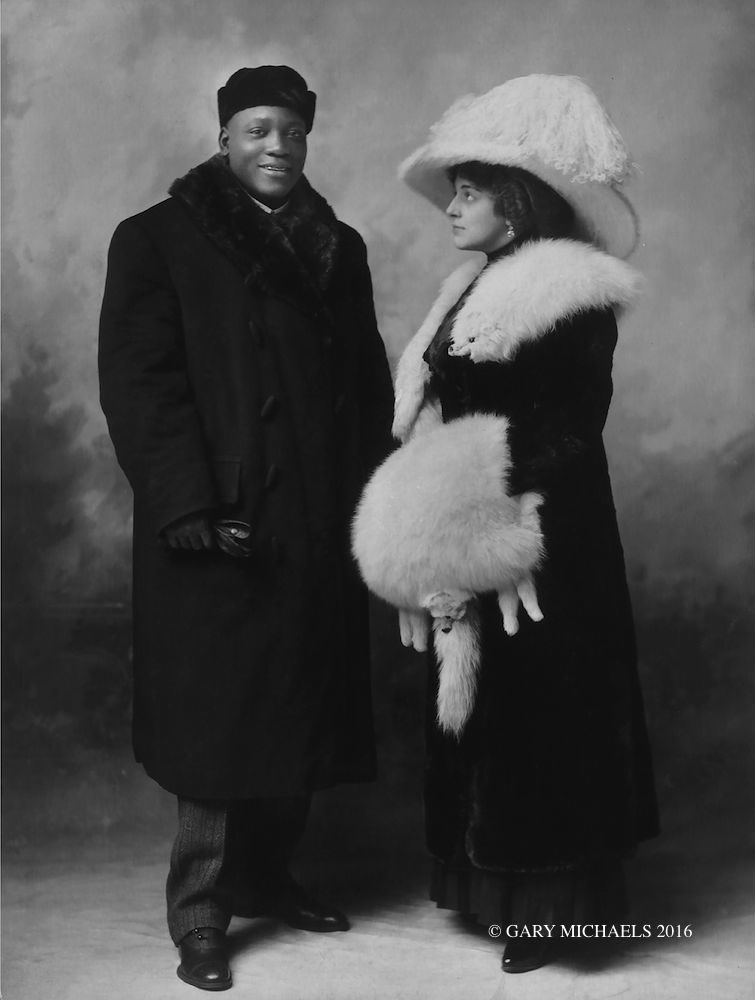
Jack and Etta Johnson. 28 1/4” x 37 3/4”. Silk Screen print on Coventry Rag. Edition size of 22 @ $1,250.
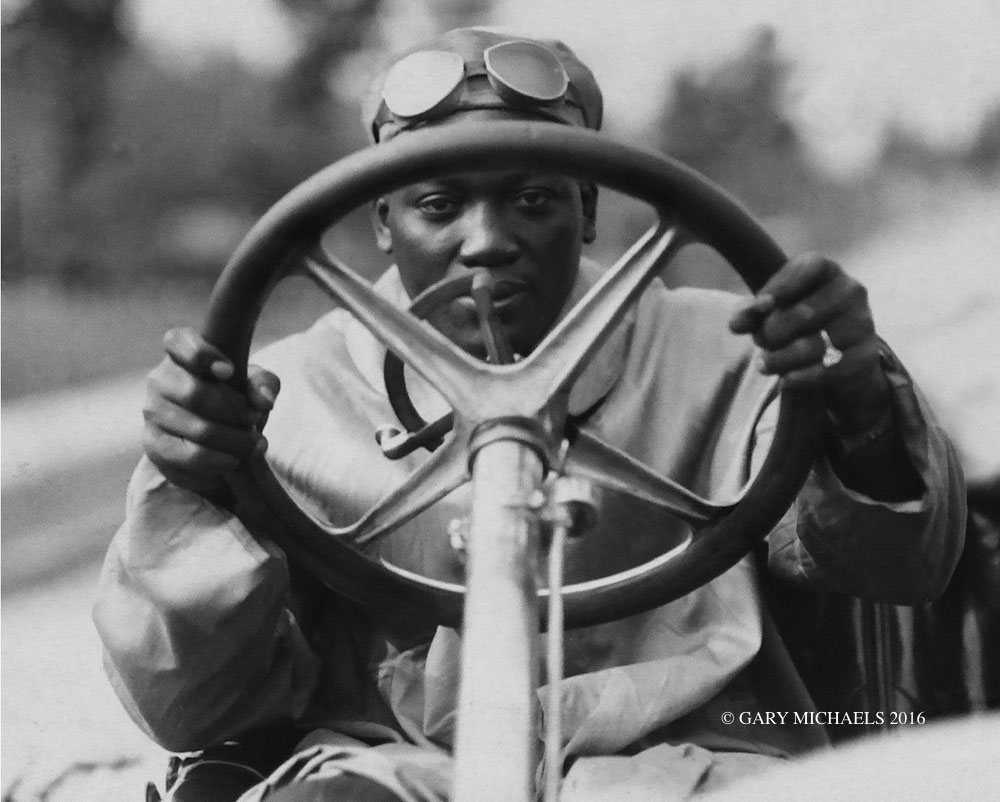
Jack Johnson and the Motor Car. 25 1/2” x 23 3/4”. Silk Screen Print on Coventry Rag. Edition size of 19 @ $900.
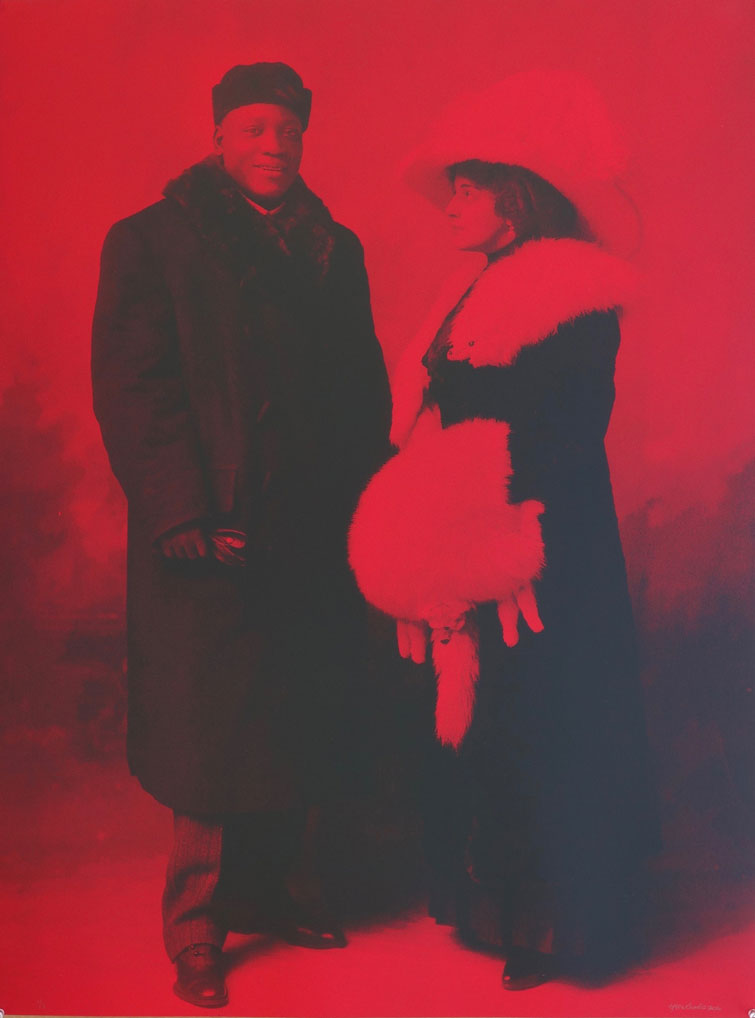
Jack and Etta Johnson. 38” x 28 1/8” Silk Screen Print on 330 GSM Red Plike Soft Touch. Edition size of 9 @ $,1250.
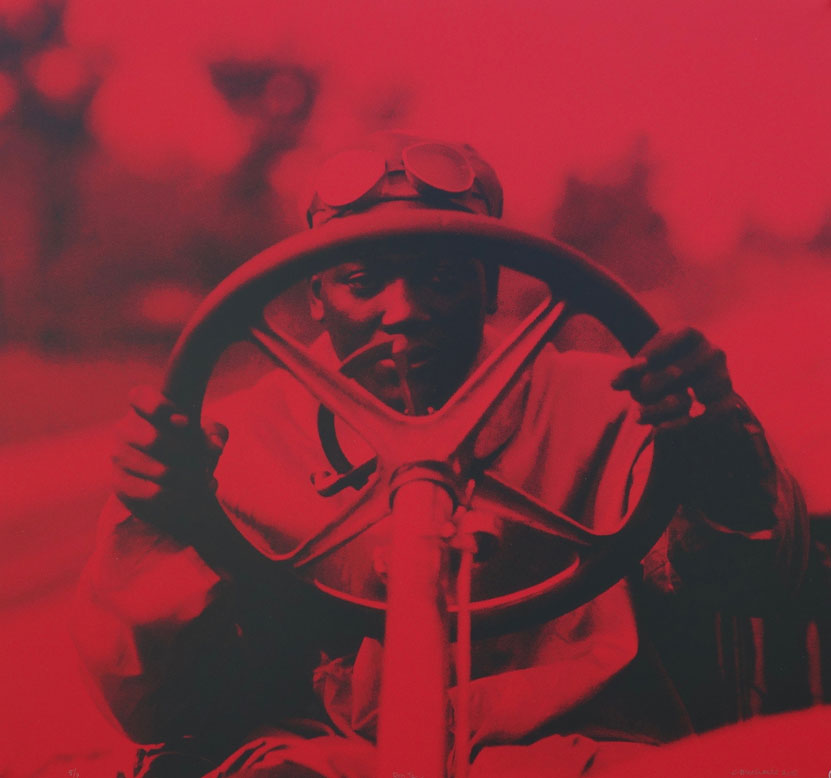
Jack Johnson and the Motor Car. 23 7/8” x 25 1/2” Silk Screen Print on 330 GSM Red Plike Soft Touch. Edition size of 9 @ $900
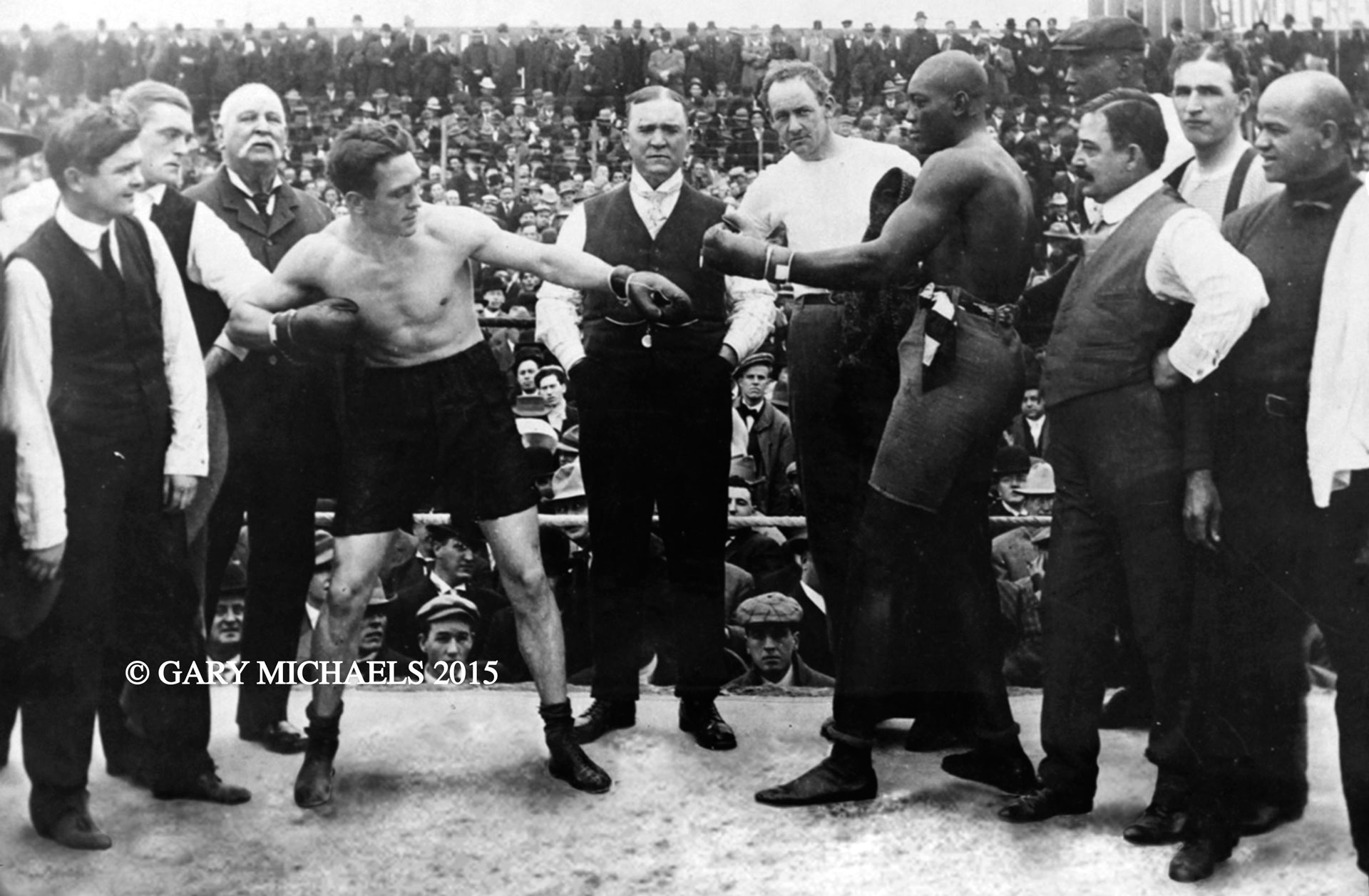
Stanley Ketchel and Jack Johnson fight October 16, 1909. 41 1/2” x 27 1/2”. Silk Screen Print on Coventry Rag. Edition of 20 @ $1,500.
Ketchel took Lamont’s advice traveling to Butte, Montana where he had over 250 amateur fights before turning pro and gaining a record of 64 fights 53 wins with 48 knockouts 5 loses 5 draws and 1 no contest.
Notable in his storied life was his 1909 fight with Heavyweight Champion Jack Johnson who was 35 pounds heavier and by 6” the taller man. In the 12th round of that fight Ketchel surprised Johnson by landing a hard right to the Champion’s jaw dropping him to the canvas for a short count. Johnson rose, not amused, and with one powerful punch knocked Ketchel unconscious. Pictures of that fight show Johnson picking Stanley’s teeth out of his glove.
The following year saw Stanley in a downward spiral winning some fights, losing others but personally in physical and emotional decline. Ketchel needing resurrection took friend Pete Dickerson up on his offer to recuperate at his ranch and prepare for a rematch with Johnson.

Stanley Ketchel and Jack Johnson fight. October 16, 1909. 27 1/2” x 40 1/4” Silk Screen Print on 330 GSM Red Plike Soft Touch. Edition size of 9 @ $1,500
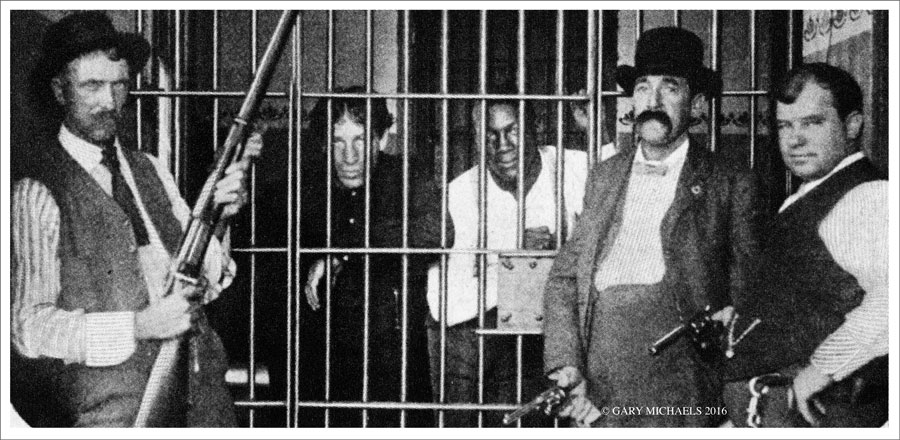
Jack Johnson & Joe Choynski jailed for “illegal” fight on February 25th, 1901. 6 1/4″ x 11″. Archival Pigment Print on Hahnemuhle Etching paper. Edition 7 + 4 A/P + 1 P/P. $150.
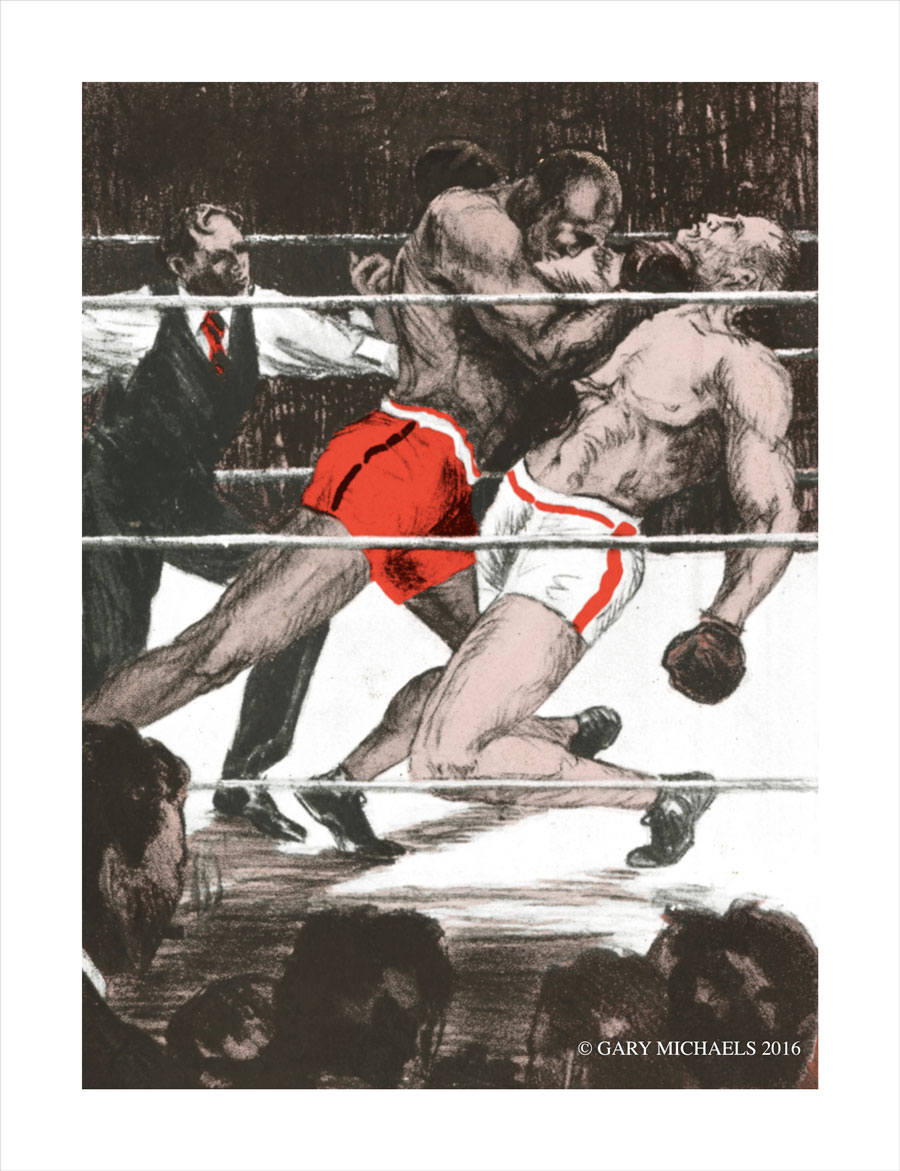
Jack Johnson KO’s Jim Jeffries July 4th, 1910. 14 1/4″ x 11″. Archival Pigment Print on Hahnemuhle Etching Paper. Edition of 10 + 3 A/P. $175.
